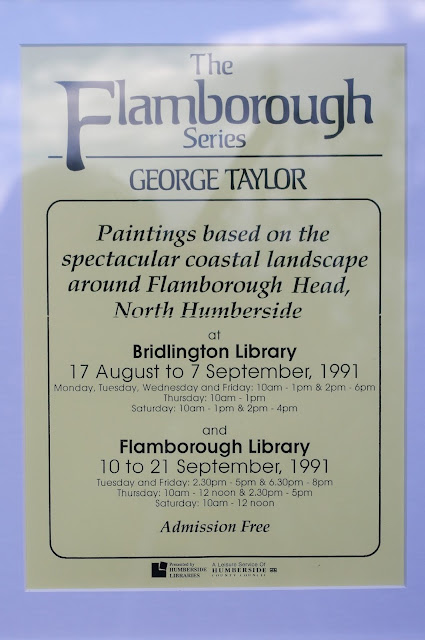Pastel, Pencil and Acrylic on Board
This mixed media painting emanated from the extensive series of works I made for my ‘Flamborough Series’ in the late ‘eighties. I had spent a considerable amount of time exploring and experiencing the coastal landscape around Flamborough Head in preparation for an exhibition organised by the former Humberside County Council in 1991. The exhibition took place at two venues, the gallery at Bridlington Library and fittingly, at Flamborough Library.
(Since 1996 Flamborough Head has been administratively within the remit of the East Riding of Yorkshire Council)
I deliberately made the subjects comprising most of the pictures recognisable as distinctive features of this incredibly visually stimulating coastal landscape, as in 'Eve Rock'. But some of the pieces, I later reworked to emphasise, not so much, the distinctive physical topography, but the all-consuming impact of the immersive coastal weather, the dramatic light and the complexity of seabird flight that I had experienced during my walks amongst and around that remarkably singular coastal location. ‘Rain, Sea and Wind’ was one of these reworked pieces, as was ‘White Rock’.
Pastel and Pencil on Board
Pastel, Pencil and Acrylic on Board
I had also walked the coast path to observe the Old Harry Rocks formation in Dorset, and had taken a boat from Swanage to view these stunning, naturally sculpted rock formations from the sea and course, the well known Needles outcrop off the Isle of Wight, which is punctuated by the red and white banded, man made lighthouse, like a full stop, whereas the lighthouse at Flamborough is set back on the headland.
These formations are mainland chalk promontories, but on the west coast of Scotland we had driven across Mull, taken the ferry from Fionnphort to Iona, and then on by small boat to Staffa, as it happened, in spectacular, squally weather conditions, to experience at first hand the approach to that small, remote island, up to and into the imposing Fingal’s Cave, with its architectonic hexagonal volcanically formed basalt columns. This small landmass was possibly, long ago in geological time, a part of a much larger island which included Mull and Iona.
There is something intensely dramatic about approaching these massive geological configurations, formed by the erosive action of wind and wave over countless millennia, from the seaward aspect, but Flamborough Head offered such a wide range of visual interpretations, that I decided to make most of the topographical paintings from the landward view, but sometimes, also from the shore margins between tides.
George Taylor
August 2021



